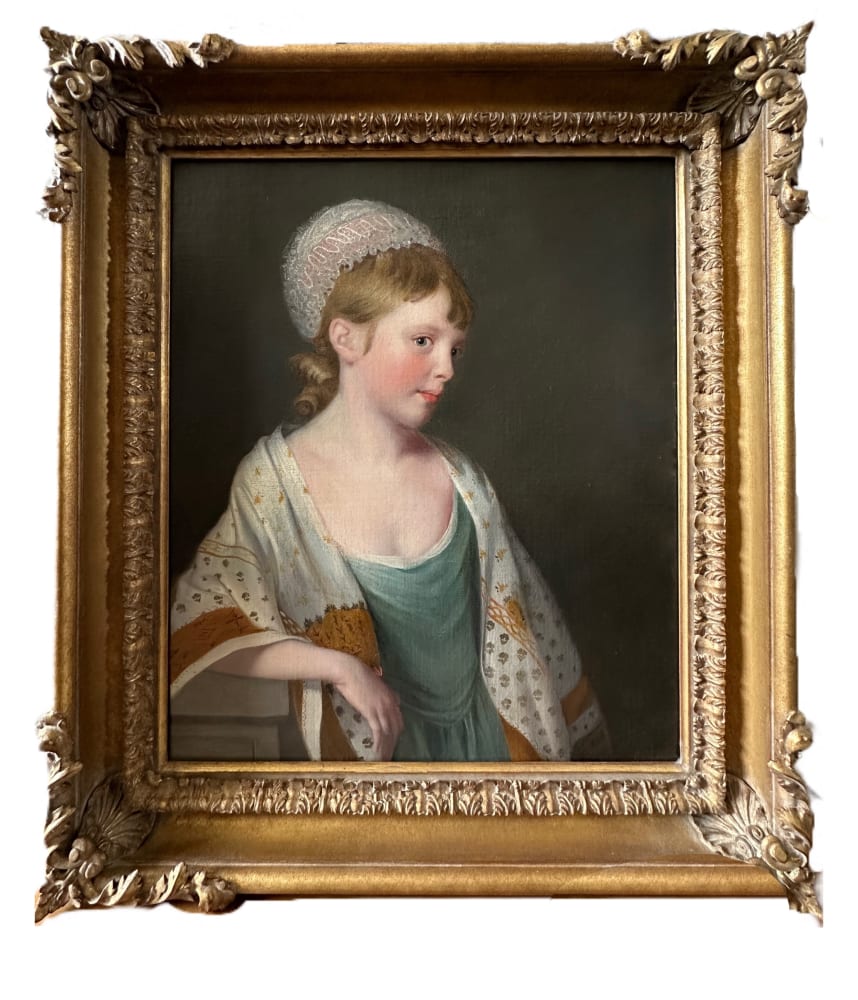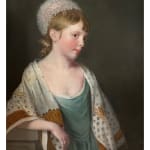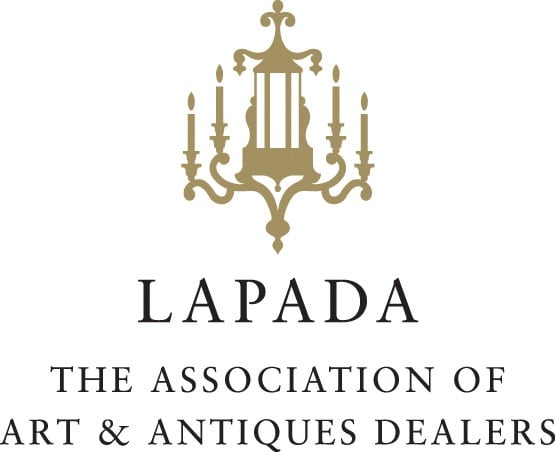Circle of Tilly Kettle (1735-1786)
Provenance
The collection of Lieutenant Colonel Vivian Seymer (1894-1967) (according to an old label on the reverse)
Private collection, London
Literature
James D. Milner, Tilly Kettle, The Walpole Society volume fifteen, 1927, page 47Portrait of a fair-haired young girl wearing a green dress, a pink and white lace bonnet and a patterned shawl draped around her shoulders, possibly in a painted or printed Indian design, leaning on a stone pedestal. Oil on canvas in a period 18th century giltwood frame.
During the 18th century Indian textiles provided 60% of the total value of the East India Company's sales in London. The Company purchased many fine Indian textiles, including muslins, painted or printed chintz and palampores, plain white baftas, diapers and dungarees, striped allejaes, mixed cotton and silk ginghams, and embroidered quilts. Indian craftsmen were masters of colour-fast dyeing techniques, and many fabrics showed wonderful designs and colour combinations produced by hand-painting and wood-blocking.
The shawl and the connection to India suggests that the young girl may possibly have been a daughter of a merchant or official working for the East India Company at the time.
Tilly Kettle (1735-1786) was born in London, the third of six children by Henry Kettle (c.1704-c.1773), a coach painter, and his wife Ann. He attended William Shipley's drawing school in the Strand and from there he may have progressed to the St Martin's Lane Academy and the Duke of Richmond's sculpture gallery. During the early 1750's he was introduced to Joshua Reynolds whom he admired and who greatly influenced his portrait style.
He first exhibited at the Free Society of Artists in 1761 and between 1762 until around 1764 he undertook various commissions between Oxford, the Midlands and London. These included the principal of Brasenose College, Oxford, Dr Francis Yarborough, the poet Anna Seward (National Portrait Gallery, London) as well as numerous portraits of the Legge family, commissioned by the second Earl of Dartmouth. He continued to exhibit with the Society of Artists up to 1776, when he then began exhibiting with the Royal Academy.
In 1768. he was granted permission by the East India Company to travel to Bengal, India, to work as as artist, becoming the first professional artist to make a career there. Arriving in Madras, among his first commissions was a portrait of Lord Pigot, the former Governor of Madras and his clientele consisted of nabobs, merchants and army officers. He also painted a group portrait of Muhammed Ali Khan, nawab of Arcot , with his five sons, which Kettle exhibited at the Society of Artists in 1771, as well as a full-length portrait of Muhammed. (Victoria and Albert Museum, London).
By late 1771, kettle was in Calcutta where he painted a large double portrait of Charles and John Sealy (Courtauld, London) and Warren Hastings, whom Kettle painted at least three times. Whilst in Calcutta, he took an Indian 'bibi' or mistress, and had two daughters, Ann and Elizabeth.






